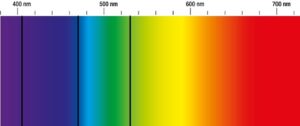Stanford Scientists Discover Key Mechanism in Gene Expression
RNA polymerase II makes life possible by expressing genes. Now, a team of Stanford biologists, chemists and applied physicists has observed it at work in real time.
BY BJORN CAREY
Every cell in your body carries the same genetic instructions, and yet cells don’t accidentally turn into bone inside your heart, and teeth don’t grow in your brain. This is thanks to systems of precise control over the expression of the genes required for each type of cell, for which an enzyme called RNA polymerase II is largely responsible.
Now, a multidisciplinary team of Stanford scientists has observed this enzyme transcribing DNA in real time in the highest detail ever. The work is a crucial piece in understanding one of the most fundamental mechanisms in biology, and could some day lead to several medical advances.
“If you ask about the fundamental molecules in all of life, the conversation starts with the molecules that carry out replication, transcription and translation of genetic code into protein,” said Steven Block, a Stanford professor of applied physics and of biology. “There is no biology without them, and in higher organisms, RNA polymerase II is one of these molecules.”
RNA polymerase II (pol II) plays the key role of transcribing genetic code from DNA into segments of RNA, which pass those instructions on to the molecular machinery that assemble proteins. In order to do this, pol II needs the help of other molecules to form a multi-protein assembly called the preinitiation complex (PIC), which can pry apart the DNA’s double-stranded helix and begin the process. As the PIC attaches to a section of DNA, it unwinds the helix and separates the two strands, forming a sort of “bubble” for the enzyme to sneak in and commence its work.
The project was made possible by what Block, the senior author, describes as a “tour de force” of biochemistry from study co-author Kenji Murakami, a former postdoc in Roger Kornberg‘s lab at Stanford School of Medicine, to build a PIC. Working at Stanford with Kornberg, Murakami, now at the University of Pennsylvania, expressed and assembled 32 different proteins from yeast into the exact molecular machine that is required in higher organisms.
“What he built is fully functional, and together, we got it to work in my lab at the single-molecule level, which is the first time it has even been attempted with an assembly this complex,” Block said. “Even without everything else we learned during this work, this is a significant technical breakthrough.”
Next, they loaded the handmade PIC and a section of template DNA into a custom-built apparatus called an optical trap, in which two powerful lasers essentially hold on to either end of the genetic material. As the PIC initiated pol II activity and began to transcribe the template DNA, it either pulled or pushed the strands of DNA, and this motion affected the light scattered from a third laser in the apparatus. This tiny change in light scattering allowed the researchers to measure the motions of the PIC all the way down to the nanometer level.
The sensitivity of their apparatus allowed the researchers not only to measure the size of the bubble created by the PIC but also to observe the activity of a separate transcription factor, called TFIIH, that serves as the molecular motor to help push the PIC along at the start. (Their equipment is so sensitive, Block said, that the researchers have to conduct their measurements during the night or on weekends, so that it doesn’t pick up vibrations from recent campus construction.)
The researchers were pleased to see the motor in action, as it hadn’t been documented before, but it was the size of the transcription bubble – the loop of DNA created to allow the gene to be converted to DNA – that was particularly exciting. Although scientists had seen a similar bubble in bacteria, the version they observed in higher organisms was enormous, at over 10 times larger.
Block said that these discoveries all together add to a growing picture of both how the transcription of genes gets turned on and the factors that control and modulate that activity.
“If you want to understand how genetics works, you need to understand how genes are controlled, and the decision about whether or not to transcribe a gene is control at its most fundamental level,” Block said. “There’s great merit in understanding something that’s truly fundamental in science. It doesn’t matter if you’re a pathogen, a plant or a person, this process is central to your biology.”
A better understanding of the transcription mechanism, Block said, may allow scientists to begin to devise ways to interfere with it or manipulate the rate at which it operates. Both these approaches could inform the design of drug therapies to treat diseases that hinge on the activation or regulation of various genes.
Co-authors of the study, which is published in Nature, include Furqan Fazal, Cong Meng and Roger Kornberg, a professor of structural biology at Stanford School of Medicine.














